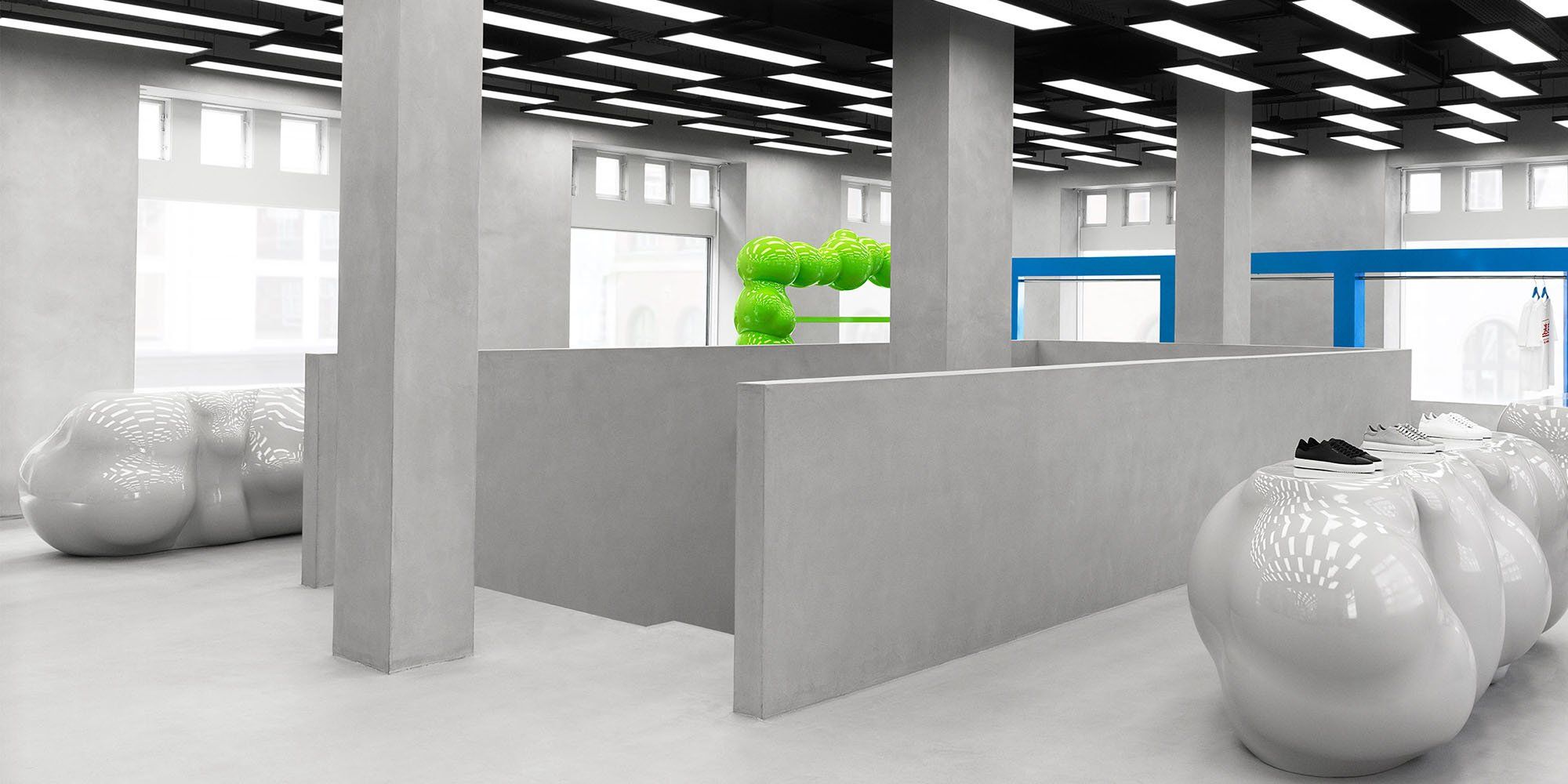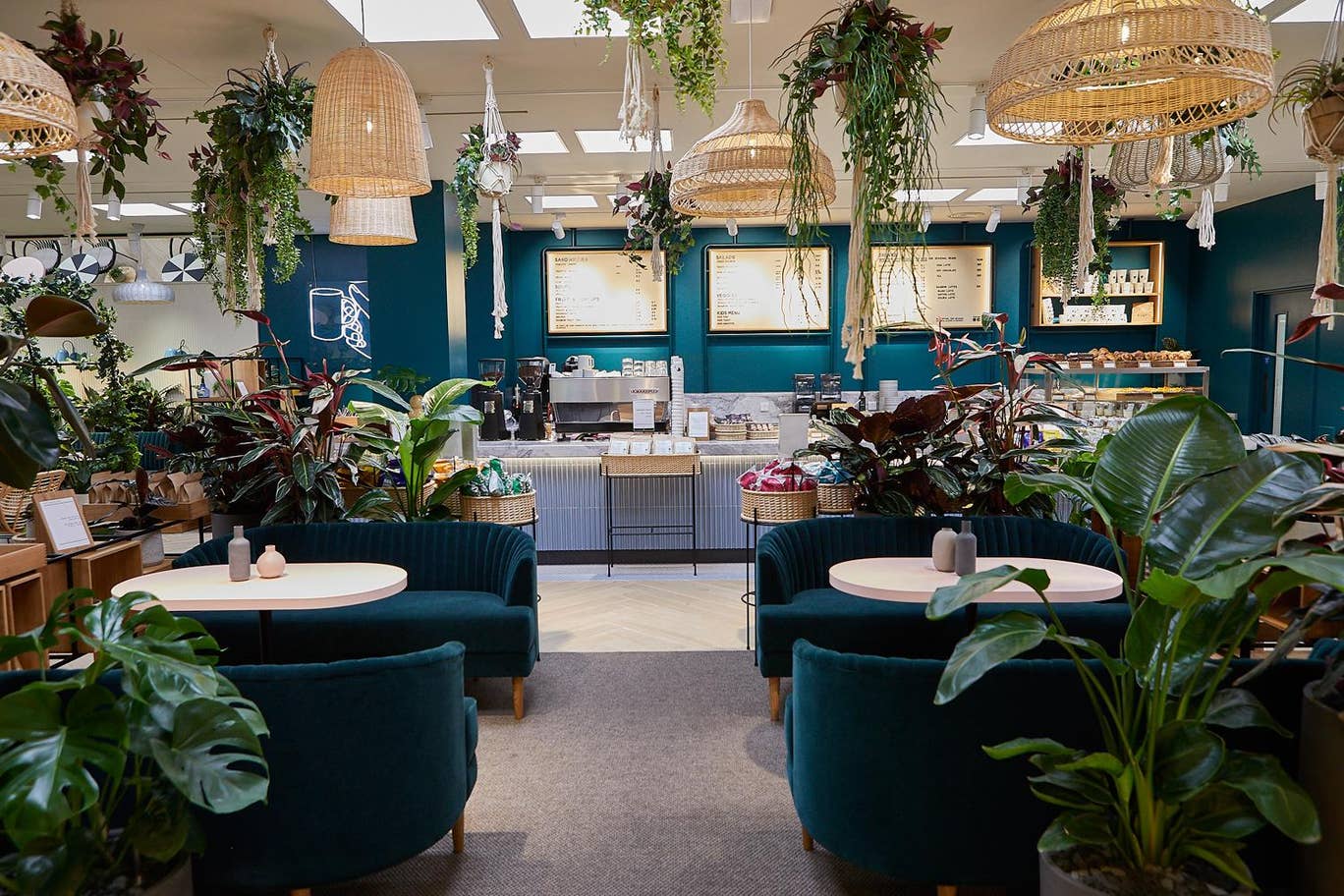
To serve and inspire - making the store the USP
Today, e-commerce is booming through the roof and a lot of brick-and-mortar stores struggle with the competition. In times like these, it could be that taking a step back – might be step forward. The vital thing that separates e-commerce from a physical store is – the store. The experience, the knowledge, the personal touch. And here are some example on how you can make the most of it.
Shopping online has fundamentally changed how we shop and plan our lives. It’s not surprising, considering the scale and speed of this transformation, that people have talked about physical stores disappearing from our lives altogether. The reality, of course, is more nuanced–and it’s becoming increasingly clear why. Visiting a store is, and will remain, essential to retail. If done right, the store will emphasize their purpose, the physical experience can become their brand’s key differentiator.
THE SOCIAL ASPECT
The in-store cafe concept is not a new idea, but the latest eateries to pop up are in hip cafés with conscious food options to match. Swedish fashion group H&M knows all about this. The latest addition to their palette of brands and cafés are It’s pleat, an in in-store café located in some of the London and Stockholm based H&M’s. The interior and the menu is described as “instagrammable” by reviewers, and the food is healthy, locally grown and affordable. All very suitable for building brand in social medias.
Not only do they position themselves as contemporary food wise, in the Stockholm café they arrange theme nights called “Come sit with us”. Events mainly targeted to young women (15-30) with informal talks from influencers, cook book writers and social entrepreneurs. A good example of being perceived as relevant and reaching out to the desired target group in a new way.
KNOW YOUR CUSTOMER
Shopping experiences continue to evolve, sometimes very rapidly, and retailers must meet the challenge of the new environment by knowing their customers really well. One brand that has a high customer awareness is Axel Arigato. The label, which began as an online-only couture sneaker label, has now five brick and mortar stores in Europe. When opening the flagship store in Copenhagen, the reviews were extraordinary. Designed by Halleroed and Max Svärdh, the store is perceived more as a contemporary art exhibition than a shoe shop.
“The store is created for the people in our community, rather than bringing sales. This is the future of retail,” says co-founder and CEO Albin Johansson of the space, which will also play host to special projects and weekly events. “Our mission has always been to work without boundaries and bridge fashion, art, commerce and community.”
CREATING THE ”HYGGE”
The sense of belonging and cosiness, is neatly summed up in the Danish word "hygge". It is a word descibing comfortable conviviality, and an undemanding way of socialize. Both H&M and Axel Arigato has listened to their customers, and adapted their venues after the target group they are adressing, both with related content and the perception of the store.
The trend for other woke brands today is primarily to build a community, rather than to sell a product. The product today, is the community itself. Big brands such as Apple and Nike, has for a long period positioned themselves as a community with core values and followers, not USP’s and customers. But how will you get there? Start by using the most valuable asset of all, the staff.
- Personal contact when shopping is immensely important today, says Paul Esplana, concept developer at Fagerhults Belysning AB. We need to feel that it is not about screens, and that we are getting something more than just a purchase. One of our basic needs as humans is confirmation and being seen, and that is where the staff in the physical store is a huge asset. Humans also have the feeling that we need to belong. Being a part of a movement, or a community, is something that speaks to us.
TEXT MARIA VÅRENIUS
FOTO H&M, ERIK UNDÉHN
Relaterade nyheter

Omvänt mentorskap: ”Allt ledarskap handlar om människor”
Under det senaste halvåret har sexton ledare från bolag i Jönköpings län haft varsin mentor via programmet Omvänt Mentorskap. Det som gör det just »omvänt« är att mentorerna är yngre och i början av sina yrkeskarriärer medan adepterna är mer seniora. Kristoffer Emanuelsson, produktionschef på Fagerhult, och Maria Liljeqvist, enhetschef inom hemtjänst i Jönköpings kommun, är ett av mentorsparen. Hej Maria och Kristoffer! Nu är Omvänt mentorskap över, vad har ni haft fokus på i ert samarbete?Kristoffer: ”Vi har inte haft några specifika mål utan har reflekterat och pratat, och så har Maria kommit med inspel på hur jag kan tänka i min vardag.”Maria: ”Jag tycker vi har haft en tydlig tråd där vi utgått från Kristoffers frågeställningar och reflekterat kring dem.” Kristoffer, var det något särskilt som du ville lyfta – och som du tar med dig? ”Jag ville fokusera på hur jag kan engagera kollegor och vi landade i flera diskussioner kring feedback. Det är lätt att fastna i det klassiska »Bra jobbat!« men det kan behövas lite mer utvecklande kommunikation och det vill jag bli bättre på gentemot mina närmaste medarbetare.” Maria flikar in: ”Jag sa till Kristoffer; du får inte säga »Bra jobbat!« om du inte också utvecklar vad som gjordes bra. Det är så lätt att fastna där.” Omvänt mentorskap 1 Att bryta invanda mönster är kan vara en utmaning, hur har det känts att kliva utanför komfortzonen? Kristoffer: ”Redan vid anmälan så bestämde jag mig för att ge detta en verklig chans. Annars är det ju ingen idé! Jag tycker det är viktigt att poängtera att det till stor del hänger på ens egen inställning. Att man verkligen vill, och vågar vara lite obekväm. Vi har haft bra diskussioner och samtidigt väldigt roligt, och det är ju alltid viktigt.” Maria: ”Jag tycker Kristoffer har varit modig och vågat testa de metoder vi diskuterat. Det har gjort att vi hela tiden kommit vidare.” Maria, har du lärt dig något som du tar med dig – utöver din roll som mentor? Maria: ”Ja, absolut! Det är så tydligt, att även om vi jobbar i väldigt olika miljöer så handlar ledarskapet alltid om människor och individer, och hur vi leder dem. Det är en värdefull insikt. Dessutom har vi haft roligt, och jag har stärkts i min egen roll som ledare genom att ha en senior ledare som lyssnar, tar till sig och provar mina idéer och tankar om ledarskap.” Ni jobbar i vitt skilda branscher, har olika lång ledarerfarenhet och är nya bekantskaper för varandra – vad tar ni med er från det? Maria: ”Vi är ganska olika som personer, och det har varit intressant att reflektera kring det i olika scenarier och hur det påverkar ledarskapet. Vi har lärt oss mycket av varandra.” Kristoffer: ”Jag tycker det är viktigt att vara öppen med sina brister, och samtidigt våga tänka nytt. Och kanske lägga eventuella skillnader kring hur länge man har varit ledare eller ålder åt sidan – och fokusera på att själva samtalet ska bli bra. Maria har ställt en del tuffare frågor där jag känt mig lite obekväm, men det har fått mig att ifrågasätta gamla vanor och varför jag gör saker på ett visst sätt. Det har hon gjort väldigt bra.” Kristoffer, utifrån ditt perspektiv som adept – hur ser du på Omvänt mentorskap? ”Inledningsvis kändes det lite obekvämt, men jag tycker man ska ta chansen att söka. Jag kan verkligen rekommendera det. Att ha en mentor var intressant, och det omvända mentorskapet tycker jag var väldigt givande. Att ta sig tid för reflektion med någon som inte har koppling till min vardag öppnar för andra funderingar och frågor. Vi kommer absolut försöka hålla kontakten.”

